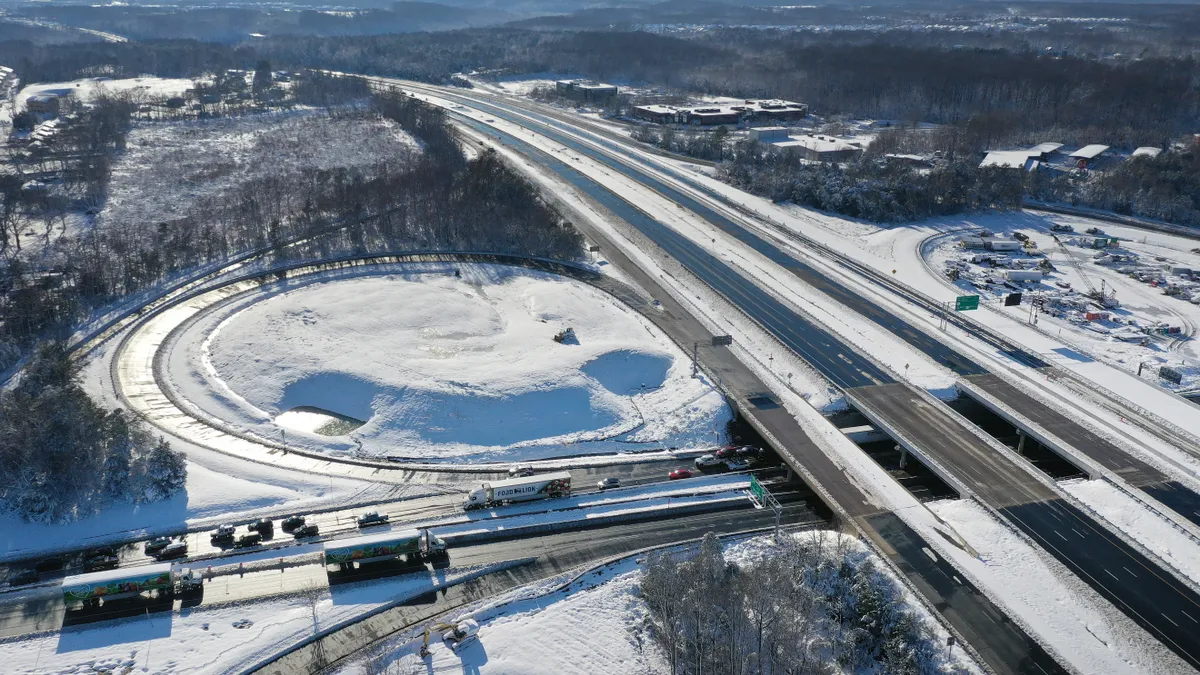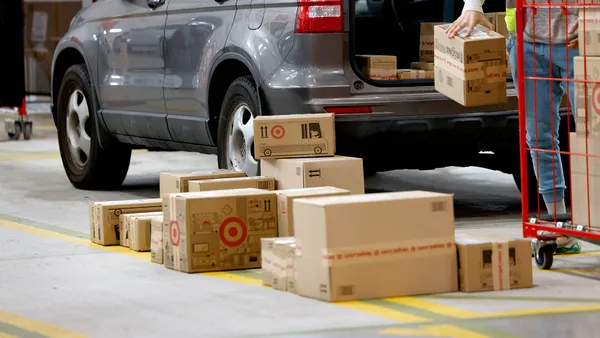Dive Brief:
- Severe snowstorms across the Southeast and Mid-Atlantic U.S. last week put thousands of suppliers and manufacturers at risk, according to Resilinc's EventWatch supply chain monitoring platform.
- The storm jeopardized an estimated 25,000 types of products and risked nearly $5 billion in revenue for the more than 100 companies Resilinc monitors.
- The average recovery time for affected facilities will be 23 weeks, and one site expects the effects to last more than three years, Resilinc said. Similar hazardous events are expected to increase as a La Niña weather pattern drags on, the company predicted.
Dive Insight:
Severe weather — from ice storms to Hurricane Ida to flooding events — threw more wrenches into global supply chains already battered by a pandemic-induced bullwhip in orders, labor constraints and skyrocketing inflation last year.
This year should be no different, according to Resilinc, which provides AI-powered supply chain mapping services and risk-monitoring data. The COVID-19 omicron variant is adding further disruption and extending companies' recovery times.
"That makes things worse in that sense, because we can't have our people there doing the necessary repair," said Bindiya Vakil, Resilinc founder and CEO, in an interview. "There's absenteeism everywhere."
Last week's storm caused nearly 1 million power outages, stranded drivers for more than 24 hours on Interstate 95 in Virginia and disrupted food shipments to some East Coast grocery stores. It threatened more than 7,000 suppliers and more than 14,000 U.S. manufacturing and distribution sites, according to Resilinc, causing food, fuel and commodity shortages and affecting industries such as pharmaceuticals and manufacturing.
The storm was among at least 20 weather events that threatened global supply chains in the past week alone, according to Resilinc. Companies need to have more visibility into their suppliers to add resilience and prepare for severe weather in the future.
"Disruptions are a fact of life," Vakil said. "Ultimately, we have to have information. We can't even start a response if we don't know that one of our suppliers or supplier's suppliers is located in this area and some of our parts come from them. This is so basic, but it's something that a lot of companies don't realize."















